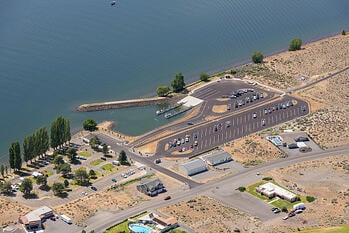Do you struggle with where to start  when it comes to making the required upgrades to existing recreation facilities? If so, you're not alone. The process to renew these facilities can be daunting.
when it comes to making the required upgrades to existing recreation facilities? If so, you're not alone. The process to renew these facilities can be daunting.
Since these recreation improvements are typically located along a shoreline, there are often several permitting agencies that provide input, direction and approval to construct your recreation project. With that in mind, let me share with you four key factors to consider prior to starting your recreation design, which will help to avoid problems down the road.
#1 - Engage Stakeholders (and Users) Early
Many users of these facilities struggle with changes to site amenities that they have grown to love. While the Federal Energy Regulatory Commission (FERC) licensing process requires outreach to stakeholders, typically these working groups are comprised of several public agencies and potentially a few local non-profit recreation organizations, not user groups.
These stakeholders are important partners, as they are some of the key permitting agencies and they understand the impact of additional recreational improvements. However, the general public doesn’t really have a clear picture of why these changes are required, what the impacts are to these facilities and what they mean to them. It is important to perform public outreach, not only for educational purposes, but to build stewardship in the long run. We know that when we listen, we can learn about the rich history of the area and the needs of the end users to truly make successful improvements that everyone can enjoy.
#2 - Recognize Site Constraints Early On
Site constraints are a key consideration and must be addressed at the beginning of the planning process. Receiving feedback from all agencies and users is important to understand the environmental, site and archaeological constraints. The goal here is to avoid or minimize impacts to these areas and reduce mitigation requirements. This will help keep your permit conditions, mitigation requirements, and costs to a minimum. Of course, this can’t always happen as these are shoreline projects, but some simple rules to follow are: avoid wetlands, reduce buffer impacts, and work with the existing topography.
#3 - Create a Sense of Place
From a design perspective, the creation of a “Sense of “Place” is one of the key factors to consider. This process starts with understanding the cultural history, nature, geology, and our biological relationships with the environment. For example, using the cool summer breezes for passive cooling, or selecting materials that are native to your area (those that have adapted to the climate), to evoke the senses, build memories and give emotional meaning to a particular place. This also allows us to maintain the historical integrity of the location and work with the natural environment by protecting the surroundings and habitats that create these unique and memorable places.
#4 - ADA Accessibility Requirement
Ensuring that all users can utilize the recreation sites is not only an important value, it's the law. The Access Board developed and has been updating design guidelines known as the Americans with Disabilities Act Accessibility Guidelines (ADAAG). These guidelines are used by the City and County agencies to set enforceable standards that designers must follow. Hiring a consultant that has a strong knowledge of these requirements, especially related to recreation facilities, is key to getting your project permitted. New sections and requirements are evaluated annually. Being aware of these requirements will ensure that your project will be compliant once constructed. Your goal is to provide safe access for all users to enjoy your recreation facilities.
These are just a few ideas and approaches that have worked for us to create a well planned and executed recreation project. There are many other codes, design guidelines and environmental factors that go into creating a design that leaves a legacy. Our hope is that the four essential elements we identified will help your agency or district navigate some of the challenges through this process.
We have designed, permitted and provided construction support for a variety of recreation facilities across the Northwest to meet FERC licensing requirements. Do you have anything to add to this list? If so, I'd love to hear from you. Feel free to leave a comment below, or connect with me via email at bcole@mackaysposito.com

